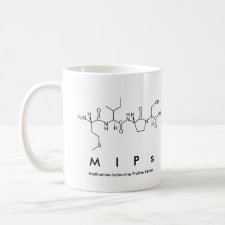
Authors: Fang C, Yi CL, Wang Y, Cao YH, Liu XY
Article Title: Electrochemical sensor based on molecular imprinting by photo-sensitive polymers.
Publication date: 2009
Journal: Biosensors and Bioelectronics
Volume: 24
Issue: (10)
Page numbers: 3164-3169.
DOI: 10.1016/j.bios.2009.03.030
Alternative URL: http://www.sciencedirect.com/science/article/B6TFC-4W04KG2-4/2/b7f72136efbd52b42dfc88ad2a4c5df1
Abstract: A novel voltammetric sensor based on molecularly imprinted polymers (MIPs) by a kind of photo-sensitive functional polymer was developed for determination of glucose in this work. Without the cross-linker and the initiator, a MIPs film on the surface of a gold electrode was easily formed by in-situ cross-link within 10�min under UV light irradiation. In alkaline medium, electrochemical oxidation behaviors of glucose on the MIPs sensor, as well as on a bare gold electrode have been investigated with square wave voltammetry. At oxidation potential of -0.50 V (vs. SCE), the peak currents on the MIPs sensor were proportional to the concentration of glucose in the range of 5.0-120 μM with the detection limit of 0.2 μg ml-1 (S/N = 3), whereas the extremely small responses of the control electrode were observed and independent of the analyte concentration. MIPs sensor displayed specific selectivity toward glucose in comparison to structurally similar analogues. The selective coefficient of glucose MIPs sensor with respect to maltose, arabinose and mannose was 9.17, 1.51 and 1.25, respectively. Fructose and inositol would not interfere with the determination of glucose because they could not be electrochemically oxidized at the potential of -0.50 V. Relative rapid response of the MIPs sensor was obtained within 7 min, and the RSD of peak currents was 5.0% (n = 5). MIPs sensor was applied to determine glucose in the simulative blood serum samples, the average recoveries was 92.6%. The experimental results showed that the sensor for glucose, based on MIPs by photo-sensitive polymers, was simpler to construct and operate, and provided an adequate sensitivity, good repeatability and accuracy and acceptable selectivity
Template and target information: glucose
Author keywords: Electrochemical sensor, Molecularly imprinted polymers, glucose, Photo-sensitive polymer, Square wave voltammetry



Join the Society for Molecular Imprinting

New items RSS feed
Sign-up for e-mail updates:
Choose between receiving an occasional newsletter or more frequent e-mail alerts.
Click here to go to the sign-up page.
Is your name elemental or peptidic? Enter your name and find out by clicking either of the buttons below!
Other products you may like:
 MIPdatabase
MIPdatabase









